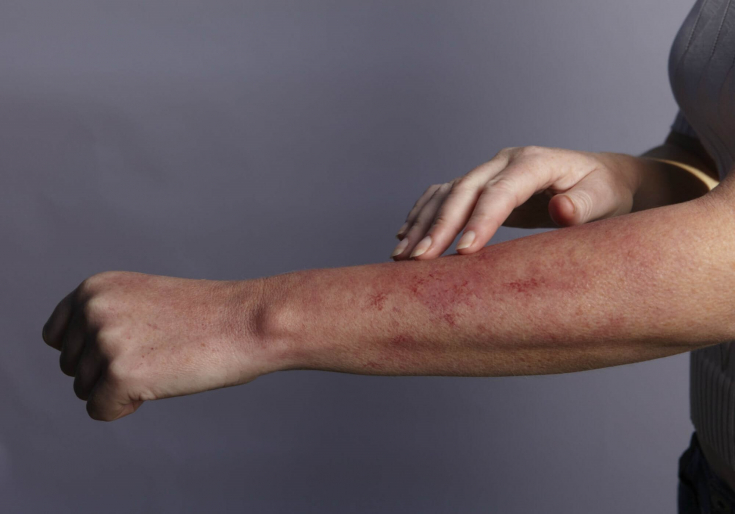Damage to the epidermal barrier, dry skin and itching are inextricably linked and form the basis of many chronic dermatoses. As a result of damage to the protective barrier of the skin, transepidermal water loss increases, pruriceptors of unmyelinated nerve fibers are activated, causing an itch sensation. Loop «itch – scratching", in turn, further increases the damage to the skin barrier and dryness of the skin. We will discuss on estet-portal.com pathogenetic mechanisms and topical therapeutic strategies in patients with itching and dry skin.
- Why does itching and dryness occur when the epidermal barrier is damaged
- Topical pruritus therapy: emollients, corticosteroids, immunosuppressants, capsacain
Why does itching occur when the epidermal barrier is damaged: pathogenesis
Itching of the skin may result from the activation of epidermal nerve fibers that have pruriceptors that cause itching.
Read also: Urea for moisturizing and restoring the skin
Mediators that activate the activity of such neurons are formed due to a complex of interactions between keratinocytes, inflammatory cells, nerve endings in combination with a cascade of immune responses.
Follow us on Instagram!
Several factors, including acid-base imbalance, microbiome, irritants, damage to the epidermal barrier, modulate the effect of these interactions on pruriceptors.
Read also: Skin protection and prevention of aging
Among the nonhistaminergic receptors that mediate this interaction, the protease-activated receptors - PAR-2 and PAR-4 are important. They are activated by proteases on keratinocytes and sensory nerve endings.

Barrier dysfunction leads to increased transepidermal water loss. In healthy skin, it is responsible for maintaining the flexibility of the stratum corneum and is involved in the regulation of metabolic processes in the epidermis, such as desquamation.
Increased transepidermal water loss is a marker of epidermal barrier damage in inflammatory skin diseases.
These dermatoses are also associated with elevated pH, which leads to the release of proteases and promotes desquamation. The proteases further stimulate the activation of PAR-2, providing the transmission of signals about itching. Thus, forming a closed cycle of dryness and itching of the skin.
Topical therapy targeting
keratinocytes, nerve fibers and pruriceptors can greatly relieve itching.
Read also: Types of pruritus depending on the pathology
Topical treatments includeemollients, corticosteroids, immunomodulators, and antihistamines. Topical therapy should focus more on restoring normal epidermal differentiation than on preventing transepidermal water loss.
Follow us on Facebook!
Restoration of normal pH (4-6) of the skin is also one of the key principles of therapy.
Read also: Dermatological conditions accompanied by skin itching
Emollients are emollients in the form of an emulsion of water and lipids that promote rehydration of corneocytes by replenishing the extracellular environment with water-binding compounds and lipids. This reduces transepidermal water loss and promotes repair of the epidermal barrier. Emollients may contain additional ingredients to help reduce itching.
Topical corticosteroids activate glucocorticosteroid receptors which inhibit the release of pro-inflammatory cytokines, reducing the inflammatory component of pruritus associated with damage to the skin barrier. However, for non-inflammatory pruritus the effectiveness of corticosteroids is limited.

Topical immunosuppressants
have been proven effective in reducing pruritus within 48 hours of application. Calcineurin inhibitors regulate the activation of T-lymphocytes, inhibit the release of pro-inflammatory cytokines and help restore the epidermal barrier. Administration of 1% pimecrolimus for 3 weeks twice daily reduced transepidermal water loss and restored the lipid bilayer in the stratum corneum. Phosphodiesterase-4 inhibitors (PDE4) reduce the production of pro-inflammatory cytokines such as tumor necrosis factor, interleukin-12, interleukin-23.
Read also:How to beat the side effects of antihistamines for hives
Capsaicin – an alkaloid whichis a TRPV1 receptor ligand. Function TRPV1 – detection of body temperature and pain. This "sensor" defines the burning sensation upon first encounter with the capsaicin molecule. With repeated applications, analgesic effect occurs in neuropathic pain. It is believed to be caused by local desensitization of pain and temperature sensitivity neurons that have TRPV1 on their membranes.
In studies, the use of 0.05% creamcapsaicin
4 times a day in patients with atopic dermatitis resulted in relief of itching in 40% (4/ 10) treated patients. Local
erythemaat the application site and transient burning are common side effects. To compensate for them, it is recommended to use local anesthetics. simultaneously with the drug for the first few days.
Injury to the epidermal barrierof the skin plays an important role in the pathogenesis of inflammatory dermatoses, due to a causal relationship with itching and dry skin. Optimal therapy will eliminate all components of pruritus in pathologies such as inflammation, neuronal hypersensitivity and skin barrier dysfunction.
More interesting content is waiting for you on our





